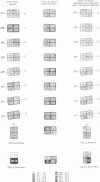Abstract
Using appropriate clinostat rotation methods, it has been shown that increases in root growth and geotropic curvature of oat coleoptiles are related to and explained (within the limits of auxin economy) by increased rates of plant respiration imparted by nullification of the gravitational stimulus. Increased respiration with decreased gravitational stimulus, in turn, is explained by increased uniformity in intracellular distribution of metabolically active graviprecipitable particles.
Oat seedlings grown with nullification of the gravitational stimulus show a more uniform distribution of graviprecipitable protoplasmic inclusions. Respiration involves reactions between particles of sufficient mass to be precipitated in 1 × g unidirectional force field and particles of such size that they are distributed throughout the protoplasm due to thermal energy. When plants are grown without nullification of the gravitational stimulus, graviprecipitable protoplasmic inclusions tend to accumulate in the lower portions of the cells. Respiration rates are consequently limited due to a relatively low concentration of the smaller particles in the region of high concentration of the larger particles. Distribution of the larger particles throughout the protoplasm negates the reaction rate limiting effects of these intracellular concentration gradients.
It has been shown using starch particles to index graviprecipitation of intracellular particles that enhancement of respiration by nullification of the gravitational stimulus may be induced, maintained, discontinued, and reinduced by treatments which concomitantly result in the more uniform distribution of graviprecipitable protoplasmic inclusions, the maintenance of this uniform distribution, the discontinuation of this uniform distribution and its reinduction.
The degree of uniformity of intracellular particle distribution in response to treatments only partially nullifying the gravitational stimulus is shown wholly consonant with growth responses of roots and coleoptiles when the growth is measured as the expression of increased respiration in the absence of auxin limitation.
The findings collectively indicate that gravity sensing by plants is broadly based on the physicochemical relationship between particle distribution and the expression of respiratory metabolism as growth.
Full text
PDF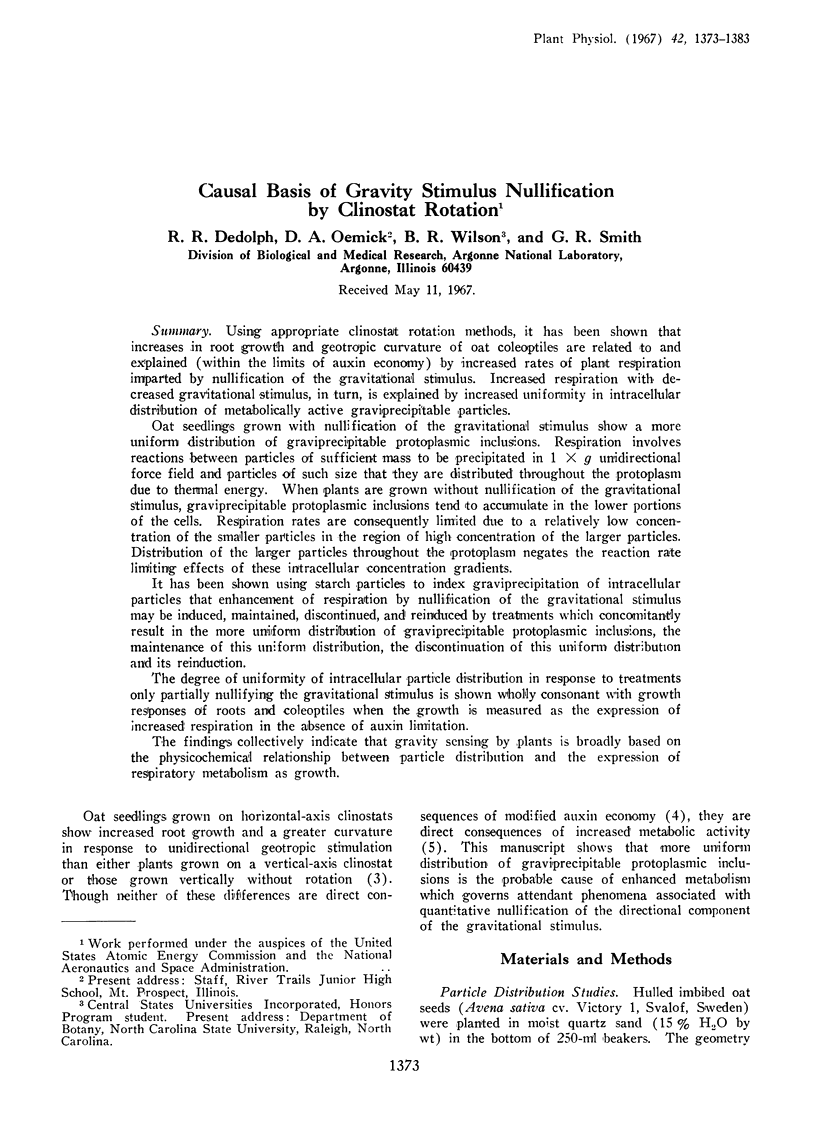
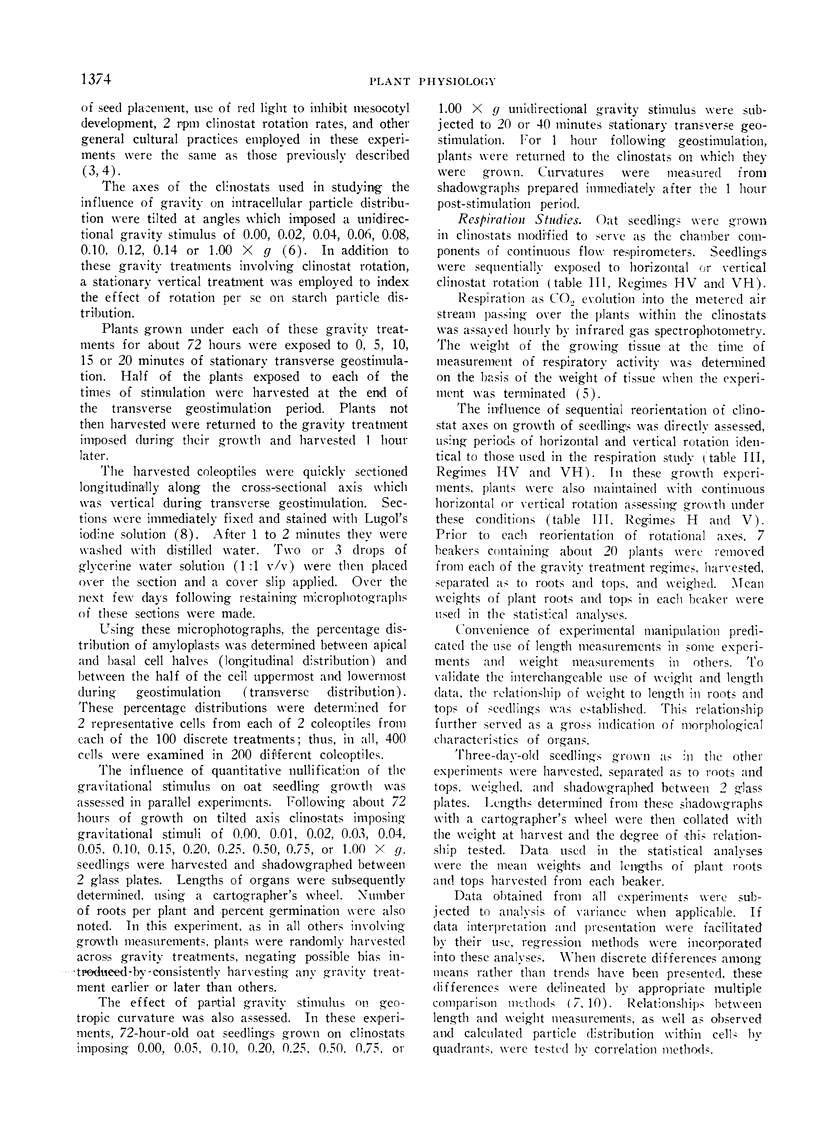
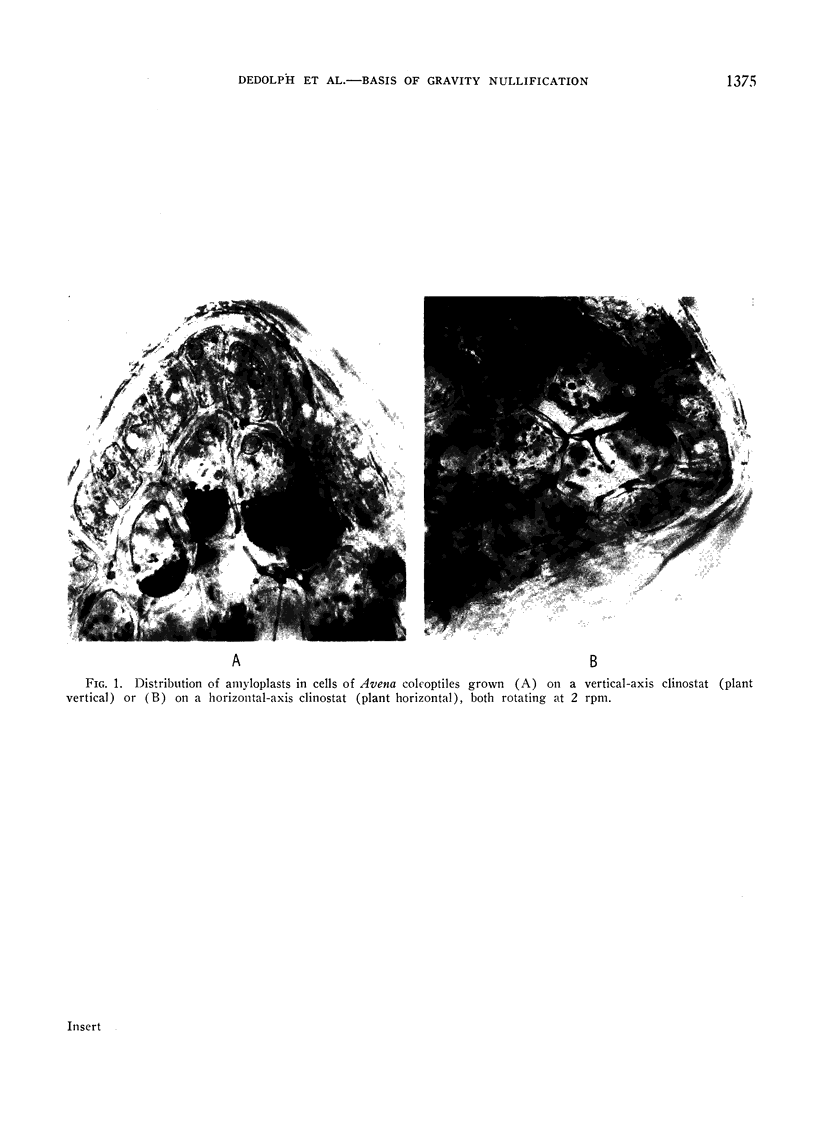
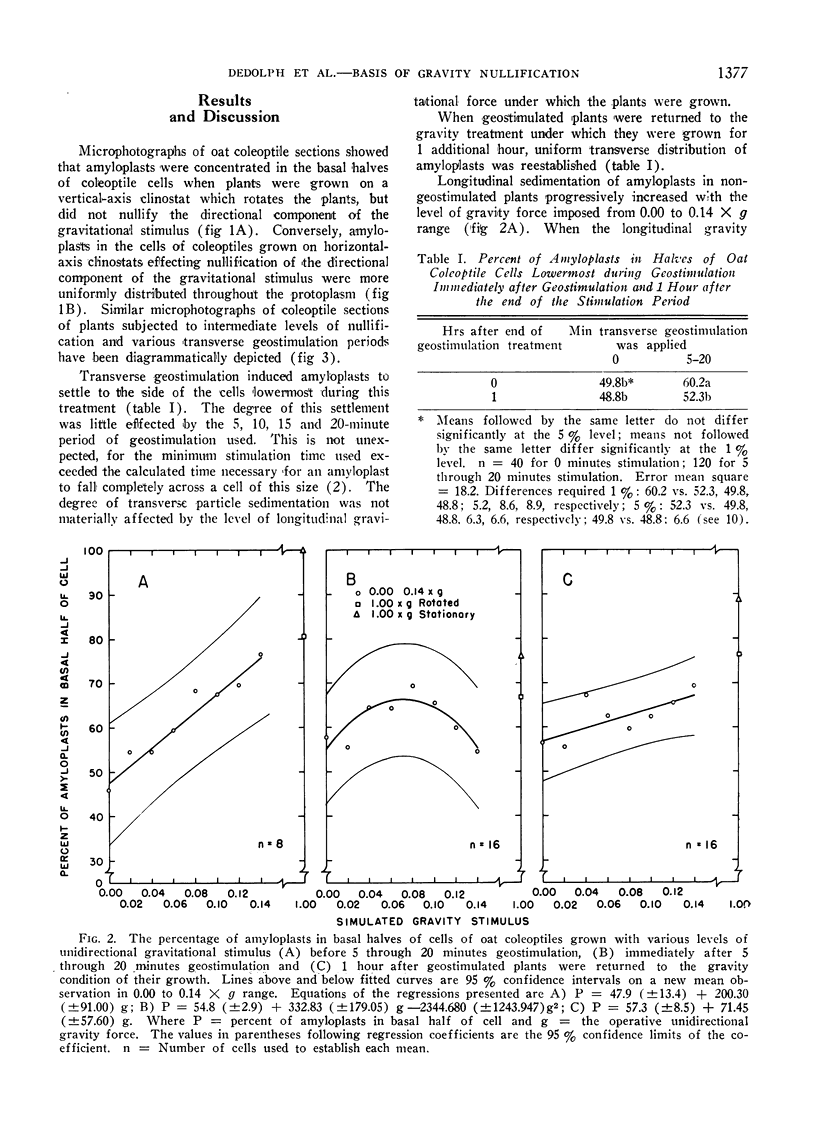
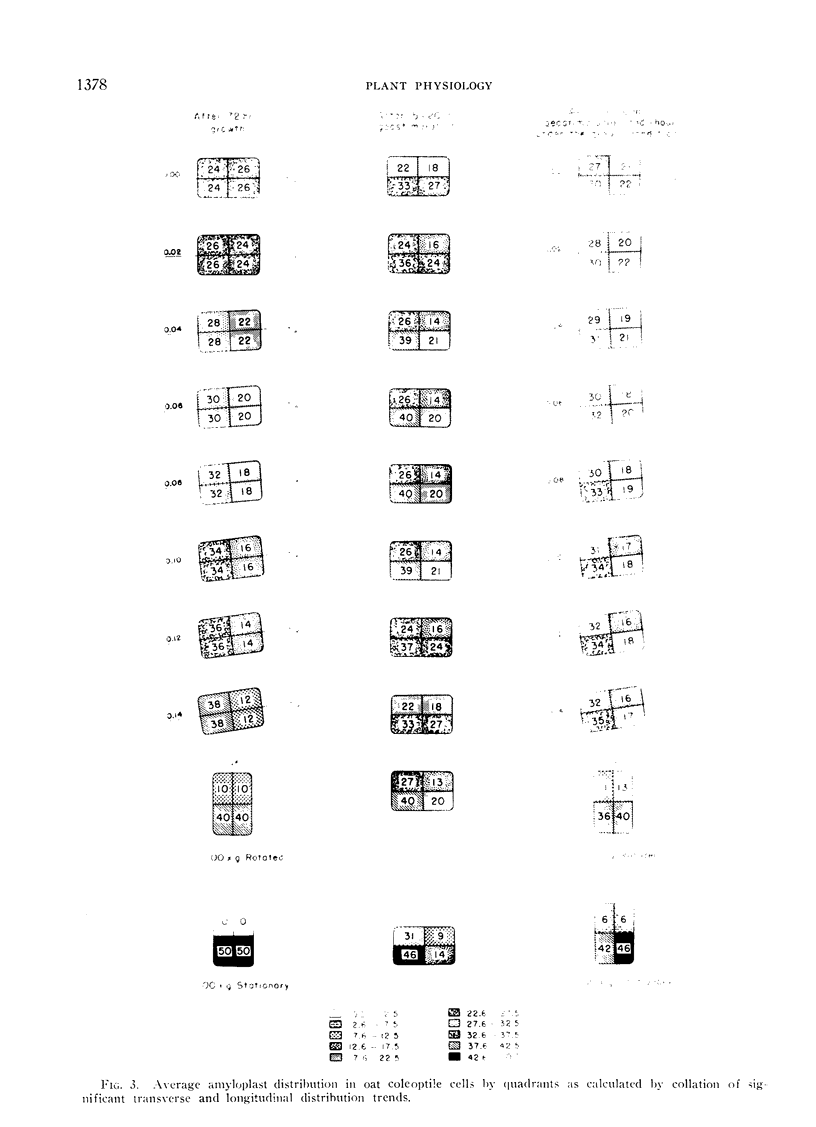
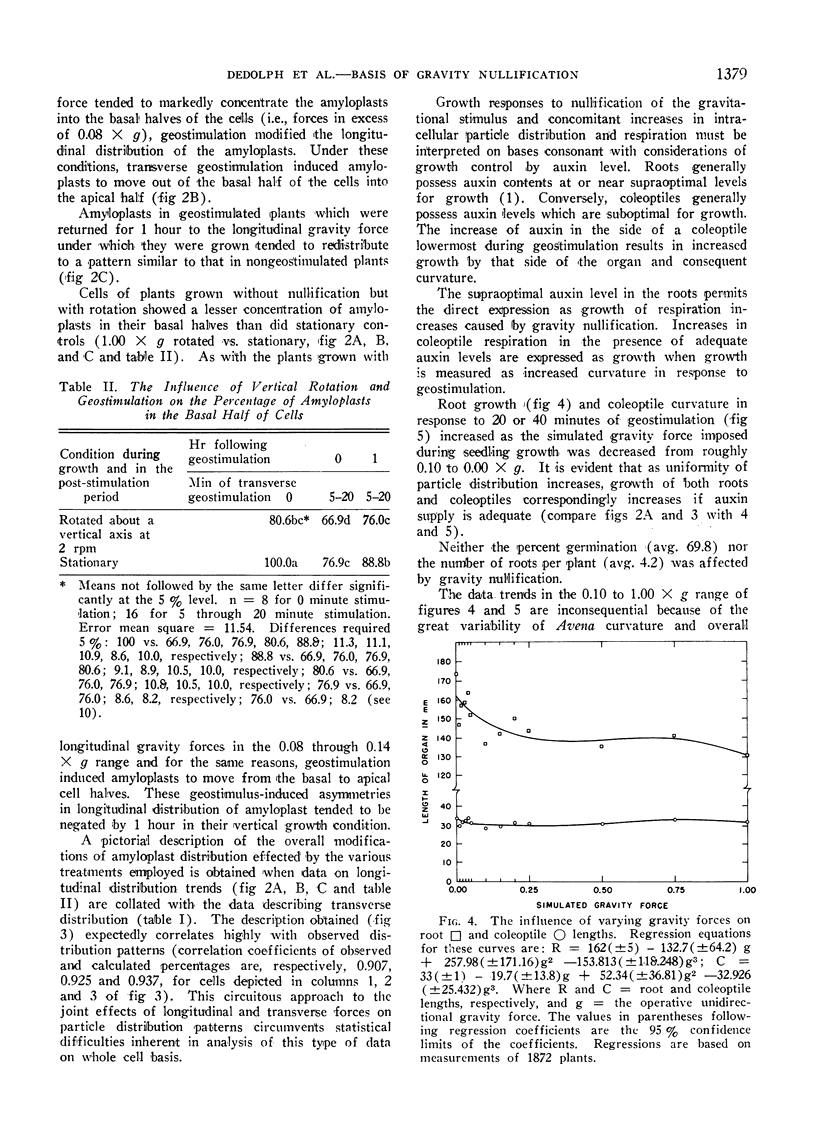
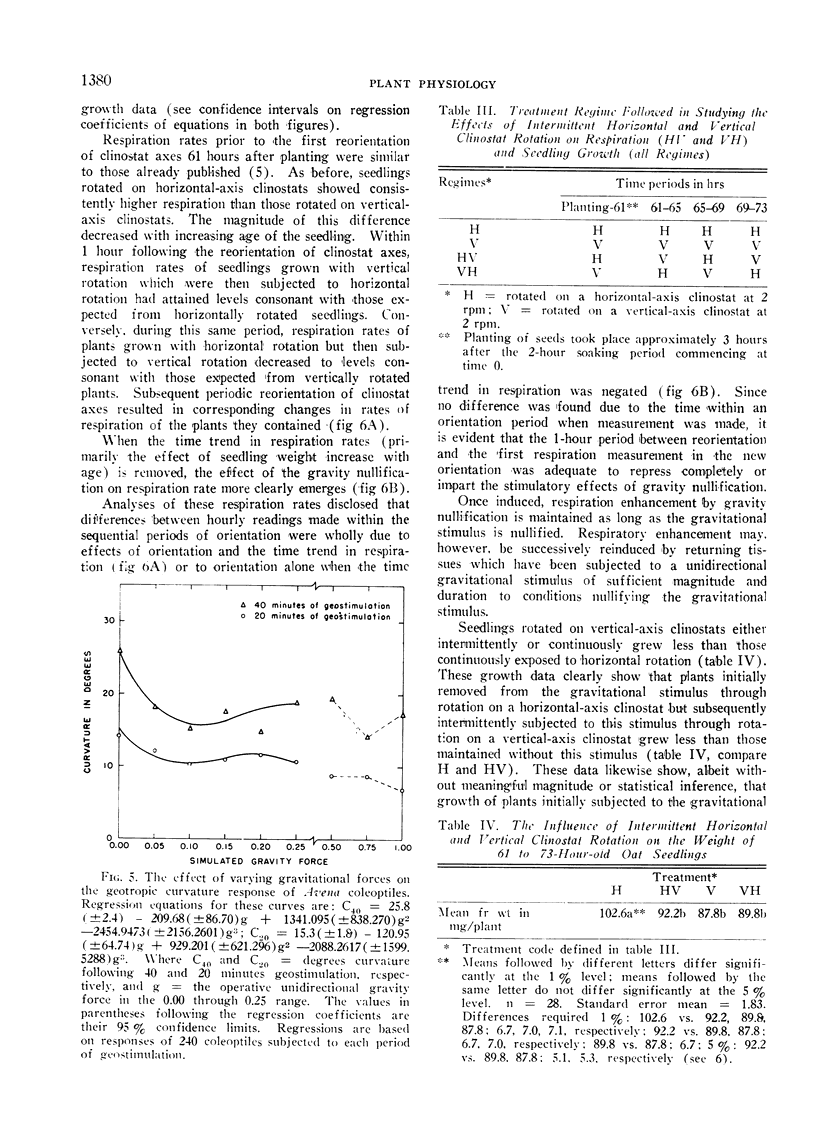
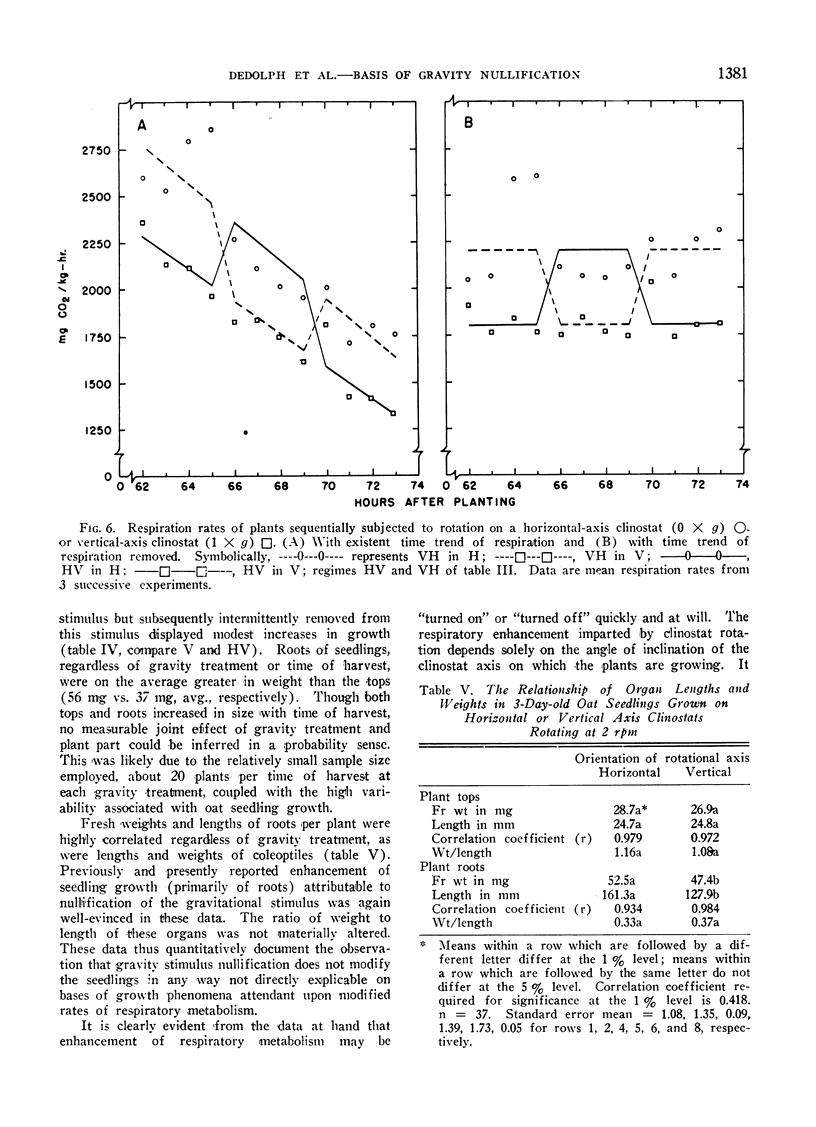
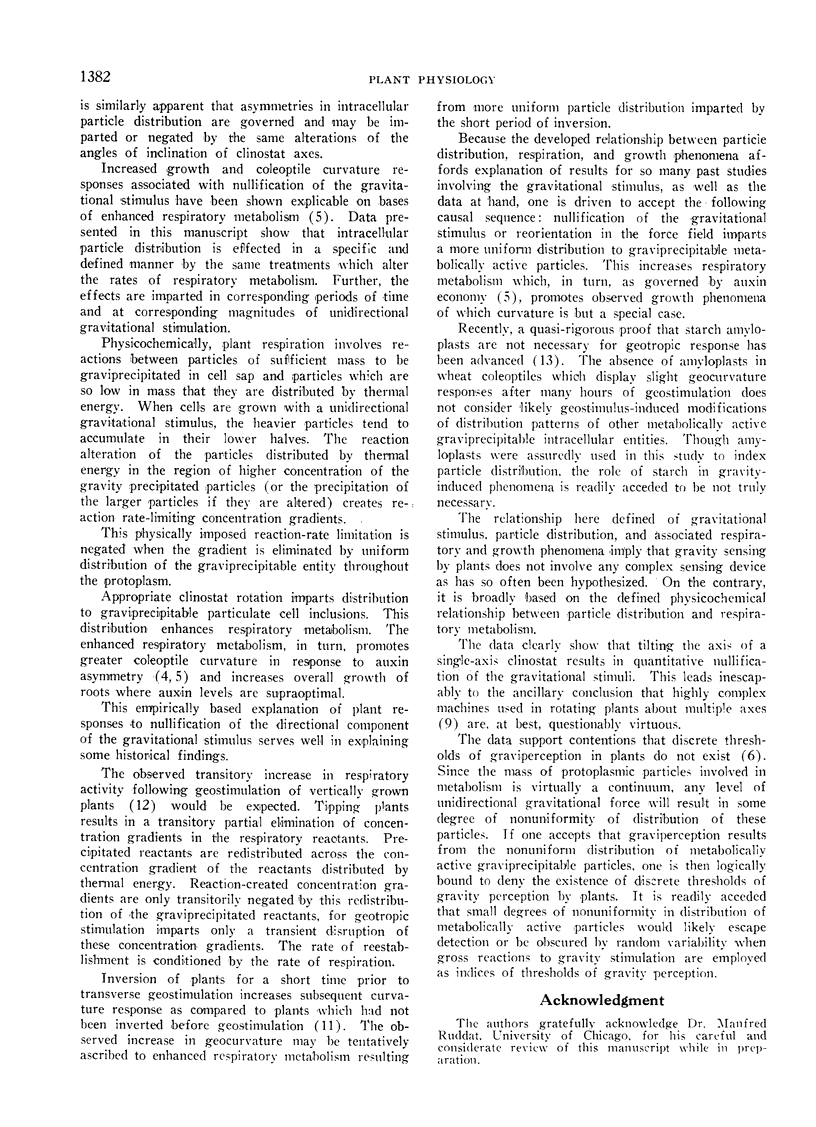
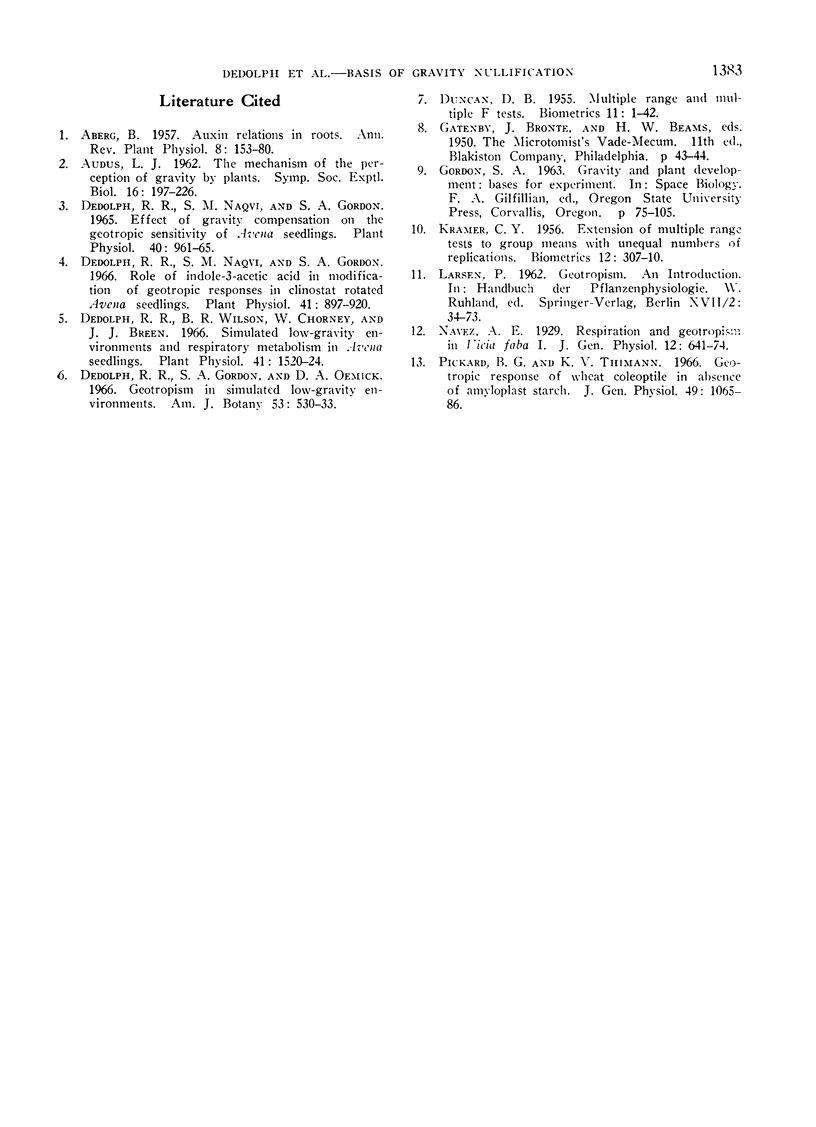
Images in this article
Selected References
These references are in PubMed. This may not be the complete list of references from this article.
- Dedolph R. R., Naqvi S. M., Gordon S. A. Effect of Gravity Compensation on the Geotropic Sensitivity of Avena Seedlings. Plant Physiol. 1965 Sep;40(5):961–965. doi: 10.1104/pp.40.5.961. [DOI] [PMC free article] [PubMed] [Google Scholar]
- Dedolph R. R., Naqvi S. M., Gordon S. A. Role of Indole-3-acetic Acid in Modification of Geotropic Responses in Clinostat Rotated Avena Seedlings. Plant Physiol. 1966 May;41(5):897–902. doi: 10.1104/pp.41.5.897. [DOI] [PMC free article] [PubMed] [Google Scholar]
- Dedolph R. R., Wilson B. R., Chorney W., Breen J. J. Simulated Low-gravity Environments and Respiratory Metabolism in Avena Seedlings. Plant Physiol. 1966 Nov;41(9):1520–1524. doi: 10.1104/pp.41.9.1520. [DOI] [PMC free article] [PubMed] [Google Scholar]
- Pickard B. G., Thimann K. V. Geotropic response of wheat coleoptiles in absence of amyloplast starch. J Gen Physiol. 1966 May;49(5):1065–1086. doi: 10.1085/jgp.49.5.1065. [DOI] [PMC free article] [PubMed] [Google Scholar]




